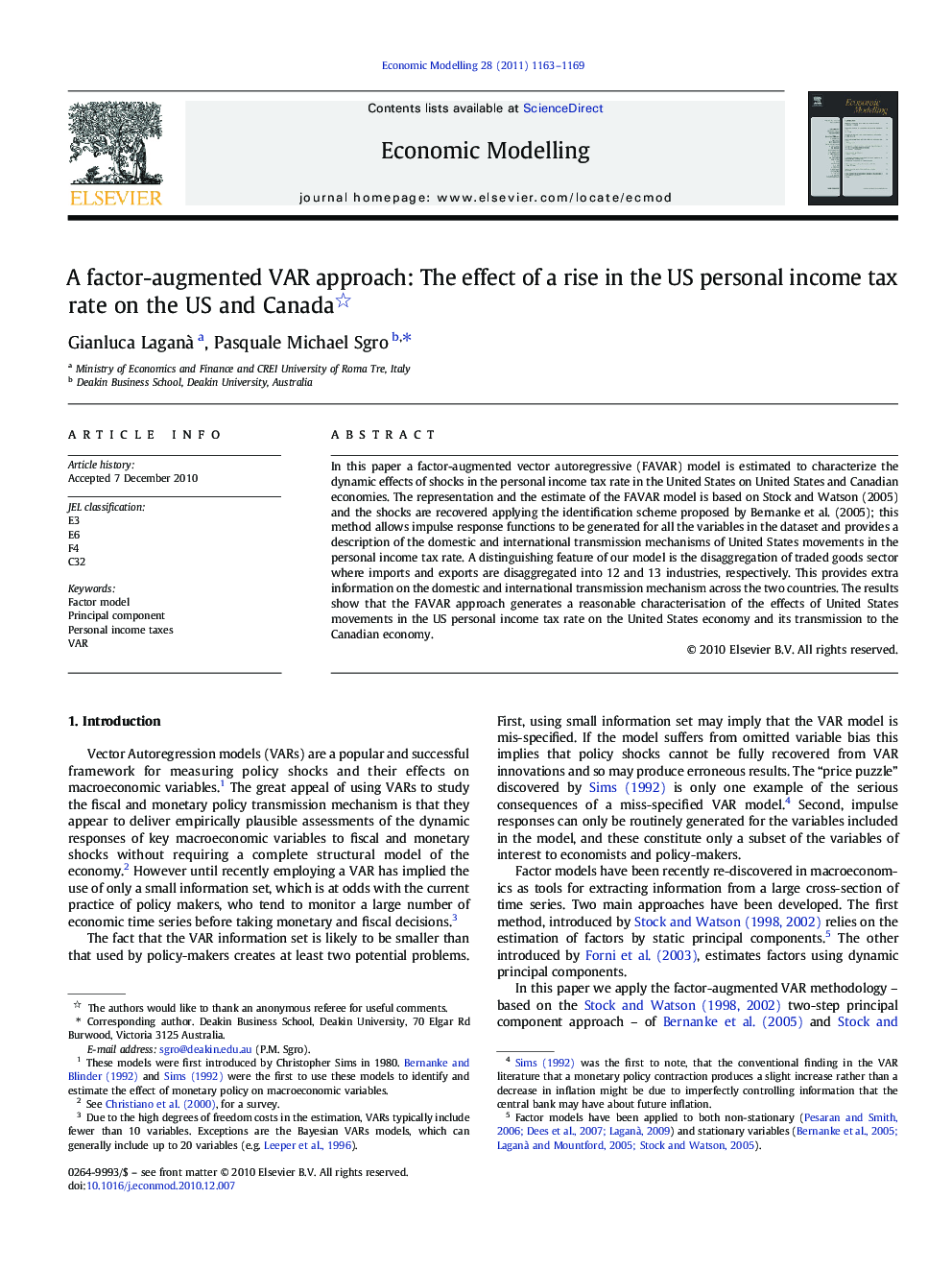| کد مقاله | کد نشریه | سال انتشار | مقاله انگلیسی | نسخه تمام متن |
|---|---|---|---|---|
| 5055651 | 1371496 | 2011 | 7 صفحه PDF | دانلود رایگان |

In this paper a factor-augmented vector autoregressive (FAVAR) model is estimated to characterize the dynamic effects of shocks in the personal income tax rate in the United States on United States and Canadian economies. The representation and the estimate of the FAVAR model is based on Stock and Watson (2005) and the shocks are recovered applying the identification scheme proposed by Bernanke et al. (2005); this method allows impulse response functions to be generated for all the variables in the dataset and provides a description of the domestic and international transmission mechanisms of United States movements in the personal income tax rate. A distinguishing feature of our model is the disaggregation of traded goods sector where imports and exports are disaggregated into 12 and 13 industries, respectively. This provides extra information on the domestic and international transmission mechanism across the two countries. The results show that the FAVAR approach generates a reasonable characterisation of the effects of United States movements in the US personal income tax rate on the United States economy and its transmission to the Canadian economy.
Research highlights⺠This paper studies the effect of US personal income tax rate movements on US and Canadian economies. ⺠We use the recently developed FAVAR techniques. ⺠A distinguishing feature of our model is the disaggregation of traded goods sector where imports and exports are disaggregated into 12 and 13 industries, respectively. ⺠Results generally accord with the standard IS-LM theory.
Journal: Economic Modelling - Volume 28, Issue 3, May 2011, Pages 1163-1169